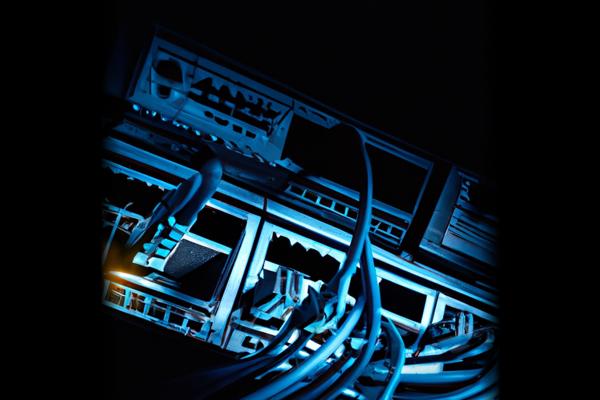Introduction
Google has made a significant advancement in email security for enterprise users by introducing end-to-end encryption (E2EE). This development ensures that only the sender and recipient can access email content, preventing Google from viewing inboxes [8]. The feature is currently in beta and aims to simplify the encryption process, making it more accessible to organizations of all sizes.
Description
Google has introduced a significant advancement in email security for enterprise users by democratizing end-to-end encryption (E2EE) [6], ensuring that only the sender and recipient can access email content and preventing Google from viewing inboxes [8]. This innovative feature, currently in beta [5] [6] [8], simplifies the encryption process compared to traditional Secure/Multipurpose Internet Mail Extensions (SMIME) [8], which can be cumbersome and previously required substantial IT resources and technical expertise, making E2EE primarily accessible to larger organizations [6].
The new E2EE system utilizes client-side encryption (CSE) [4] [6], where encryption keys are controlled by the customer and stored within their IT environment, enhancing data privacy [1] [8] [9]. This ensures that emails sent to other Gmail users are automatically decrypted in the recipient’s inbox [6], while non-Gmail recipients receive a link to view the encrypted message through a secure [6], restricted version of Gmail [1] [2] [6] [7] [8] [9], allowing them to view and reply through a guest Google Workspace account [9]. Organizations can enforce policies that require external recipients to use this restricted viewer [2] [6] [8], preventing sensitive data from being stored on third-party servers [2] [6] [8].
Users can activate E2EE effortlessly by clicking the padlock icon while composing an email, which will turn the window blue [9], and selecting the Additional Encryption option [2]. This feature currently supports encrypted communication between Gmail users within the same organization [7], with plans to expand access to all Gmail users and eventually to any email address [1]. Later this year [1] [5] [6], it will be possible to send E2EE emails to any email inbox via link or invite [9]. The E2EE functionality creates a protective “bubble” around emails [1], significantly enhancing data privacy and security [1], as only the intended recipients can decrypt and read the content [7]. For Gmail users [1] [3] [4] [5] [6] [10], the email is automatically decrypted and displayed as a regular message in their inbox [5].
This new E2EE system differs from Gmail’s existing Confidential mode [6], which [2] [3] [4] [5] [6] [8] [9] [10], while offering features like message expiration and revocation [6], does not provide true end-to-end encryption [6], as messages remain accessible to Google [6]. The E2EE system encrypts content before it reaches Google’s servers [6], making it indecipherable to the company. However, certain limitations apply to CSE [6], including a 5MB attachment limit and restrictions on specific file types [6], email signatures [6], emojis [6], and group sending [6].
IT administrators can enforce access policies to ensure sensitive data is not stored on unmanaged devices and can even revoke message access after delivery, aligning with regulatory requirements such as the Health Insurance Portability and Accountability Act (HIPAA) and the European Union General Data Protection Regulation (GDPR) [5]. Additional security features being rolled out include CSE Default Mode for high-risk teams [2], classification labels for message sensitivity [2], and enhanced data loss prevention (DLP) tools to manage and block messages based on their labels [2]. An improved AI model has also been introduced to enhance threat protection by detecting spam and phishing attempts before they reach users [2].
While Gmail’s E2EE prevents Google from accessing email content [4], metadata such as sender [4], recipient [1] [2] [3] [4] [5] [6] [7] [8] [9], and timestamps remains visible [4], allowing Google to gather valuable data for analytics and security monitoring [4]. This comprehensive approach ensures that organizations can maintain control over their email communications while meeting stringent data protection regulations. However, businesses under strict compliance regulations should verify whether Google’s implementation meets all legal requirements [4], as some industries may still prefer third-party encryption solutions for complete control over email security [4].
Conclusion
Google’s introduction of end-to-end encryption for Gmail represents a major step forward in email security, offering enhanced privacy and control for enterprise users. By simplifying the encryption process and making it more accessible, Google is enabling organizations to better protect sensitive information. However, businesses must assess whether this solution meets their specific compliance needs, as some may still require third-party encryption for complete assurance. As Google continues to expand and refine this feature, it is poised to have a significant impact on how organizations manage and secure their email communications.
References
[1] https://www.forbes.com/sites/daveywinder/2025/04/01/gmail-gets-end-to-end-encryption-from-google-as-21st-birthday-present/
[2] https://www.techrepublic.com/article/news-gmail-end-to-end-encryption/
[3] https://cyberinsider.com/google-rolls-out-simplified-end-to-end-encrypted-email-in-gmail/
[4] https://undercodenews.com/google-introduces-end-to-end-encryption-for-gmail-enterprise-users/
[5] https://siliconangle.com/2025/04/01/google-launches-client-side-end-end-email-encryption-gmail/
[6] https://www.cyberkendra.com/2025/04/gmails-new-end-to-end-encryption-for.html
[7] https://www.csoonline.com/article/3952075/google-adds-end-to-end-email-encryption-to-gmail.html
[8] https://uk.pcmag.com/hosted-email-providers/157360/google-rolling-out-end-to-end-encryption-for-gmail-workspace-accounts
[9] https://9to5google.com/2025/04/01/gmail-e2e-encrypted-email/
[10] https://www.infosecurity-magazine.com/news/google-switch-e2ee-all-gmail-users/





